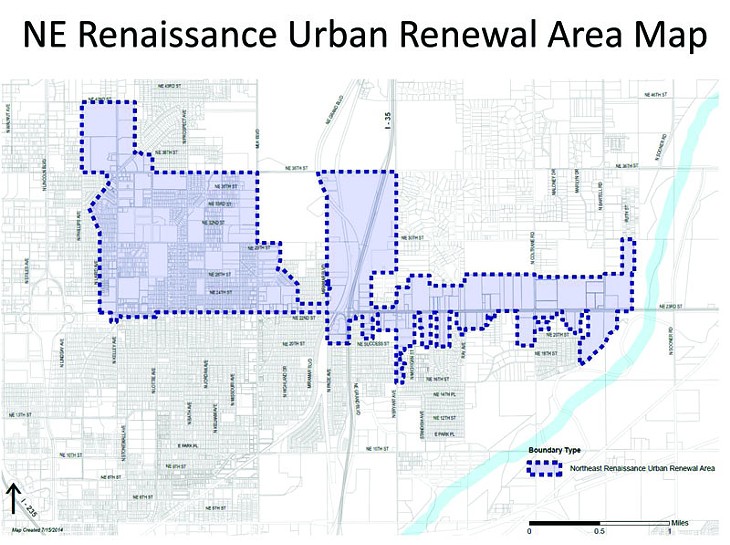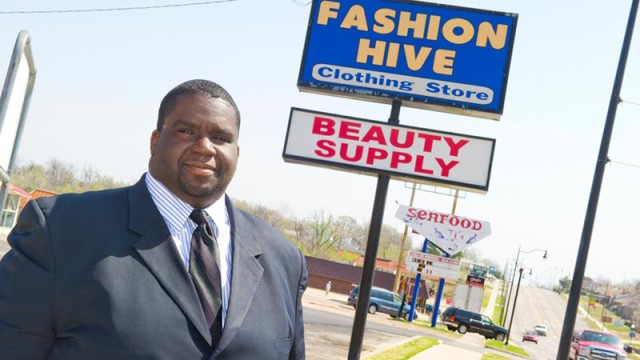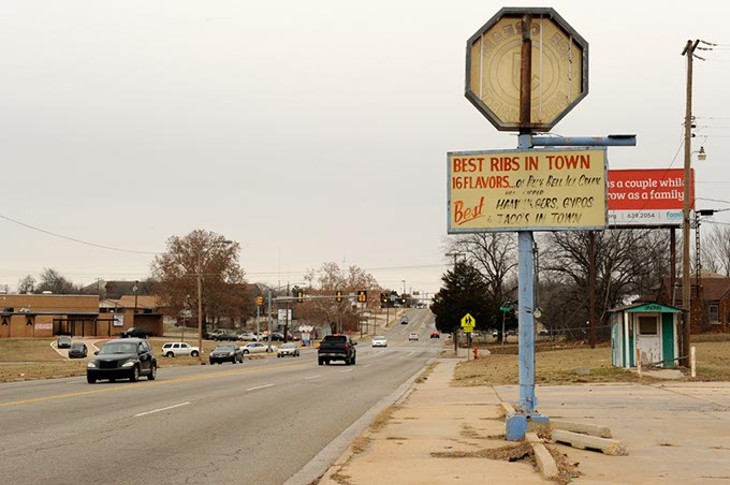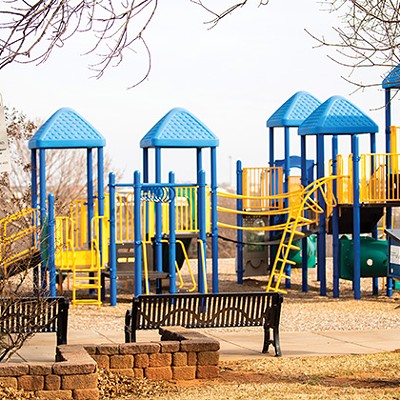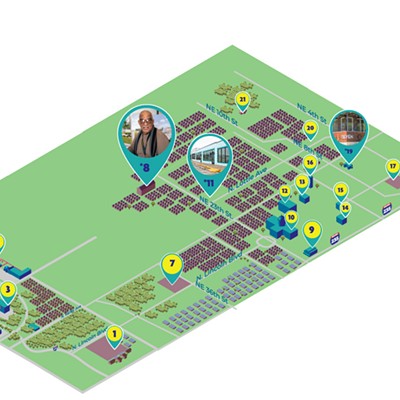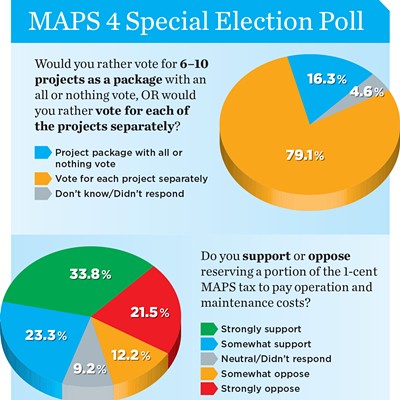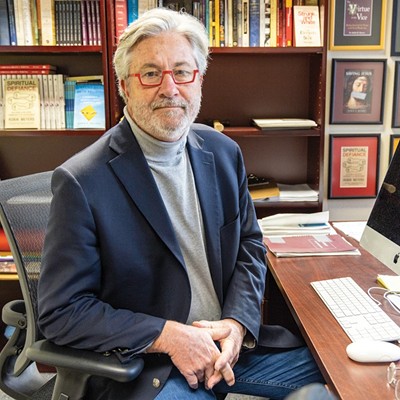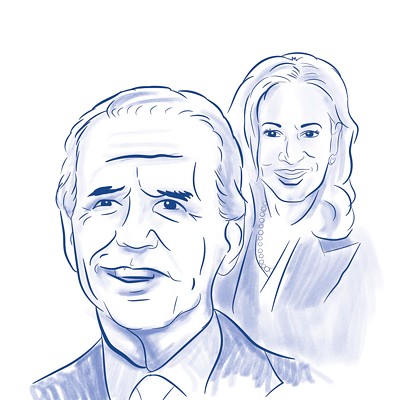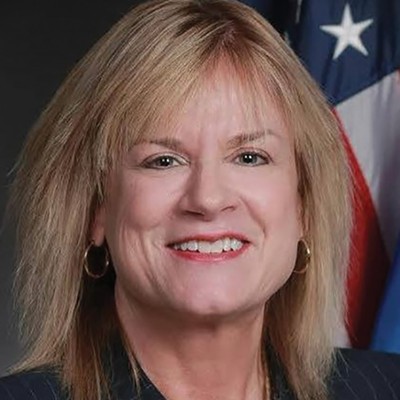When Kenneth Barnes steps off the No. 22 bus close to 7 p.m., his eight-hour workday and nearly hour-long bus ride ends with a seven-block walk to his home near Edwards Park.
“It’s a job,” Barnes said when asked if the long commute bothers him. “I’m happy to have a job.”
Barnes lives in the 73117 ZIP code, in which nearly 1 in 5 residents are without work. This community just east of the University of Oklahoma Health Sciences Center medical complex, which is one of Oklahoma City’s largest employment hubs, suffers from the highest unemployment rate in the metro.
With a median household income half the state average, this mostly African-American community is an economic wasteland in a city that has made headlines in recent years for its economic growth.
However, after years of public investment in downtown and midtown communities, the city is preparing to use urban renewal and tax-break tools in the northeast.
“This is the first true major economic development plan for northeast Oklahoma City,” said Ward 7 Councilman John Pettis Jr. “Years ago, there were different, smaller plans, but this is the first plan that actually lays out true economic development for northeast Oklahoma City, using the plan the city has used in other neighborhoods.”
The Oklahoma City Council recently voted to approve the creation of the Northeast Renaissance Redevelopment district, opening stretches of 23rd Street, 36th Street, Martin Luther King Ave. and other thoroughfares in northeast Oklahoma City to urban renewal policies and plans. The council will also be asked this month to approve a new tax increment financing (TIF) district to help incentivize new developments through property tax revenue.
“The neighborhood could use some help,” Barnes said in front of a doughnut shop sandwiched between two vacant storefronts.
Some residents say they are happy to see the city take an interest in improving the northeast but have many questions and concerns about the plan. Those who have lived in that part of town for several decades have seen a history of development promises and the removal of blight without any meaningful results.
“The plan is apparently a good plan, but there are some areas we identified that need to be more specific,” said David Sparks, president of the Capitol View Neighborhood Association. “We were not informed about most of the meetings held over the past year on this.”
Gina Blaylock, another northeast resident, said she was curious why some neighborhoods were left out of the newly created district.
“We do have a lot of vacant property around there,” Blaylock said about her specific neighborhood.
The approved urban renewal district gives the city’s Urban Renewal Authority power to carry out building policies and redevelopment requirements, along with using eminent domain as a tool to acquire some property that does not fit the development goals of the neighborhood.
Pettis provided an example of the need for eminent domain with a proposed grocery store at 23rd Street and Martin Luther King Ave.
“Sadly, just east of their proposed development, [there is] a crack prostitution hotel where the owner refuses to turn it into something that is good,” Pettis said. “That’s what eminent domain will be used for.”
Many residents who spoke with Oklahoma Gazette expressed a desire to see dilapidated and crime-infested businesses cleaned up or removed, but there is also a concern about what the power of eminent domain could mean for residents.
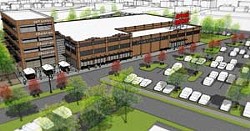
During a discussion of the plan during last week’s council meeting, Ward 1 Councilman James Greiner said he was not comfortable expanding the Urban Renewal Authority’s use of eminent power and Ward 2 Councilman Ed Shadid asked that the ultimate decision to take a property rest with the council.
“[Eminent domain] shouldn't be [decided by] just five unelected people,” said Shadid, referring to the Urban Renewal Authority. “It looks like we are going to be using eminent domain as a law enforcement mechanism or a means for retribution for those who won’t play ball.”
Shadid’s proposal to require eminent domain in the newly created district to come before the council was voted down by the council 6-3.
The council will also be asked to approve the creation of a new TIF district this month that would be used as incentives to bring developers to the northeast. The city already has an existing urban renewal district in the northeast located south of the newly created district. However, urban renewal officials said the absence of a TIF district has prevented redevelopment in the first urban renewal district and could hurt the chances of success for the newly created urban renewal district.
“We really didn’t have any additional resources that we might be able to use to make redevelopment happen,” Cathy O’Connor, director of The Alliance for Economic Development, told the council in her presentation on the use of TIF in the northeast.
The city has intentions to inject new economic life into the northeast, which, if successful, could improve income levels, access to retail and employment opportunities in a community that ranks low in each area.
“I feel pretty excited about what is getting ready to take place,” Pettis said. “This is a new day for the northeast.”

